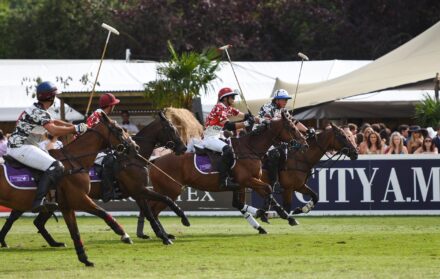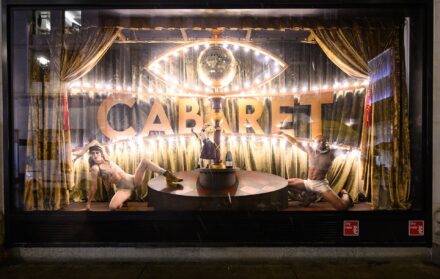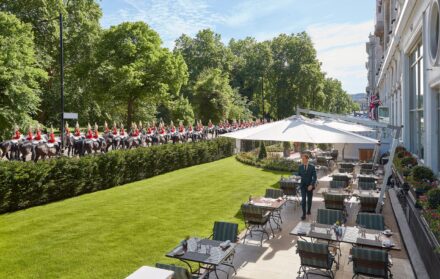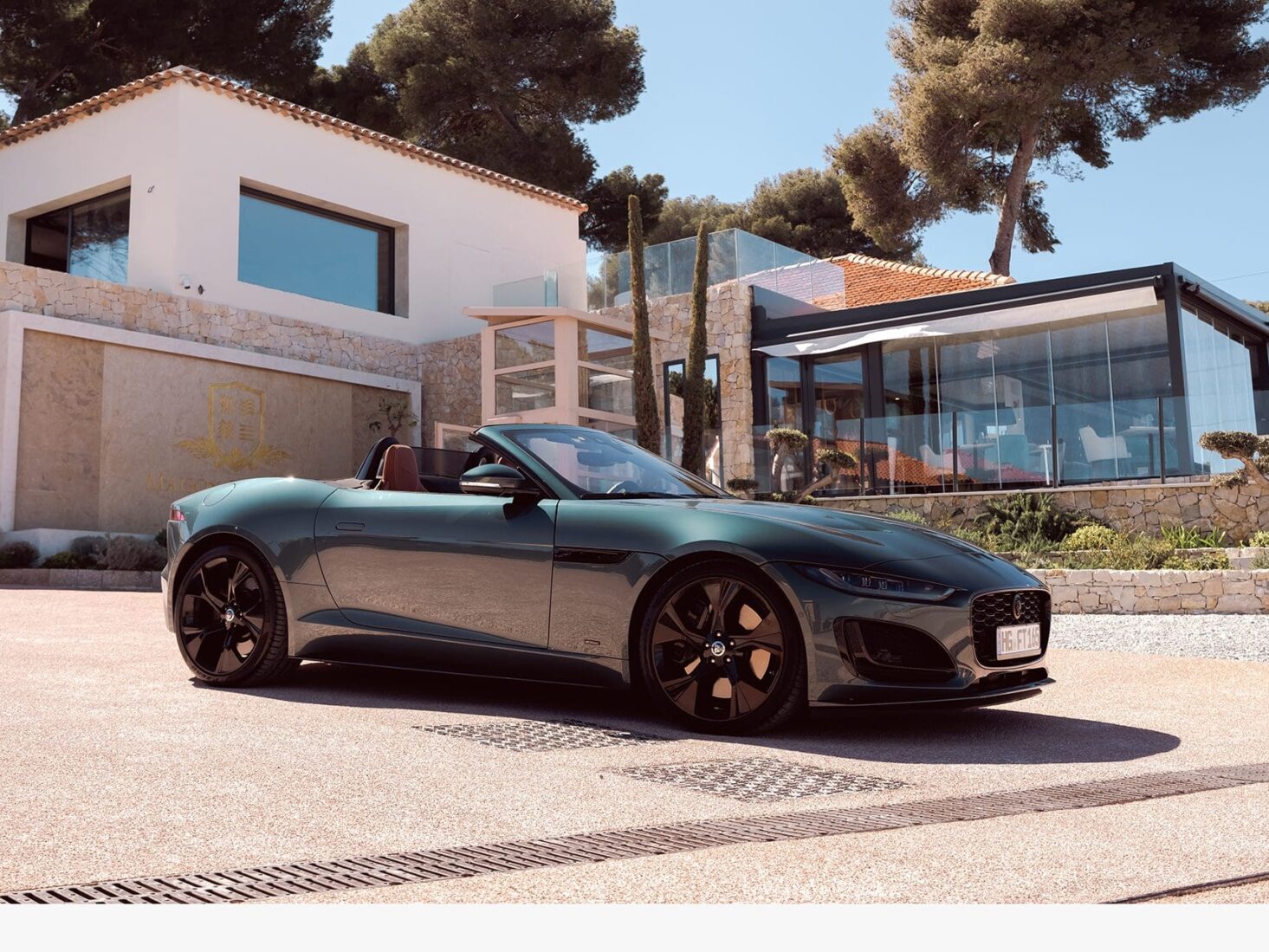
Jaguar F-Type 75: One last roar for the beloved two-seat speedster
As the carmaker prepares to go all-electric from 2025, Jaguar’s special-edition F-Type 75 represents the swansong of that much-loved two-seater. Time, then, for one last roar around the French Riviera
Back in the early 1950s, there wasn’t an awful lot to be optimistic about in the United Kingdom. The country was still recovering from a brutal World War, which had claimed over 450,000 British lives, destroyed thousands of buildings and forced businesses up and down the country to cease trading. Yet, while good news might have been thin on the ground, motorsport, perhaps improbably, had just entered something of a golden age.
Leading the field at that time was the stunning XK120, Jaguar’s first true sports car, which debuted at the London Motor Show in 1948 in open-top, concept form. Its curvaceous, aluminium body caused something of a sensation. So much so, that it convinced Jaguar founder Sir William Lyons to put the car into production almost immediately.
Claiming the coveted title of the world’s fastest production car, the XK120 took its name from the aluminium-bodied car’s top speed of, you guessed it, 120mph. The following year, Jaguar took the XK120 to the track.
At a race at Silverstone in 1949, an XK120 finished in first and second place. By 1950, XK120s were racing at the 24 Hours of Le Mans, the Targa Florio in Sicily, the Mille Miglia in Italy, the Alpine Rally in France, and several races in the States. Victory came in volume, establishing Jaguar’s racing credentials in the process.
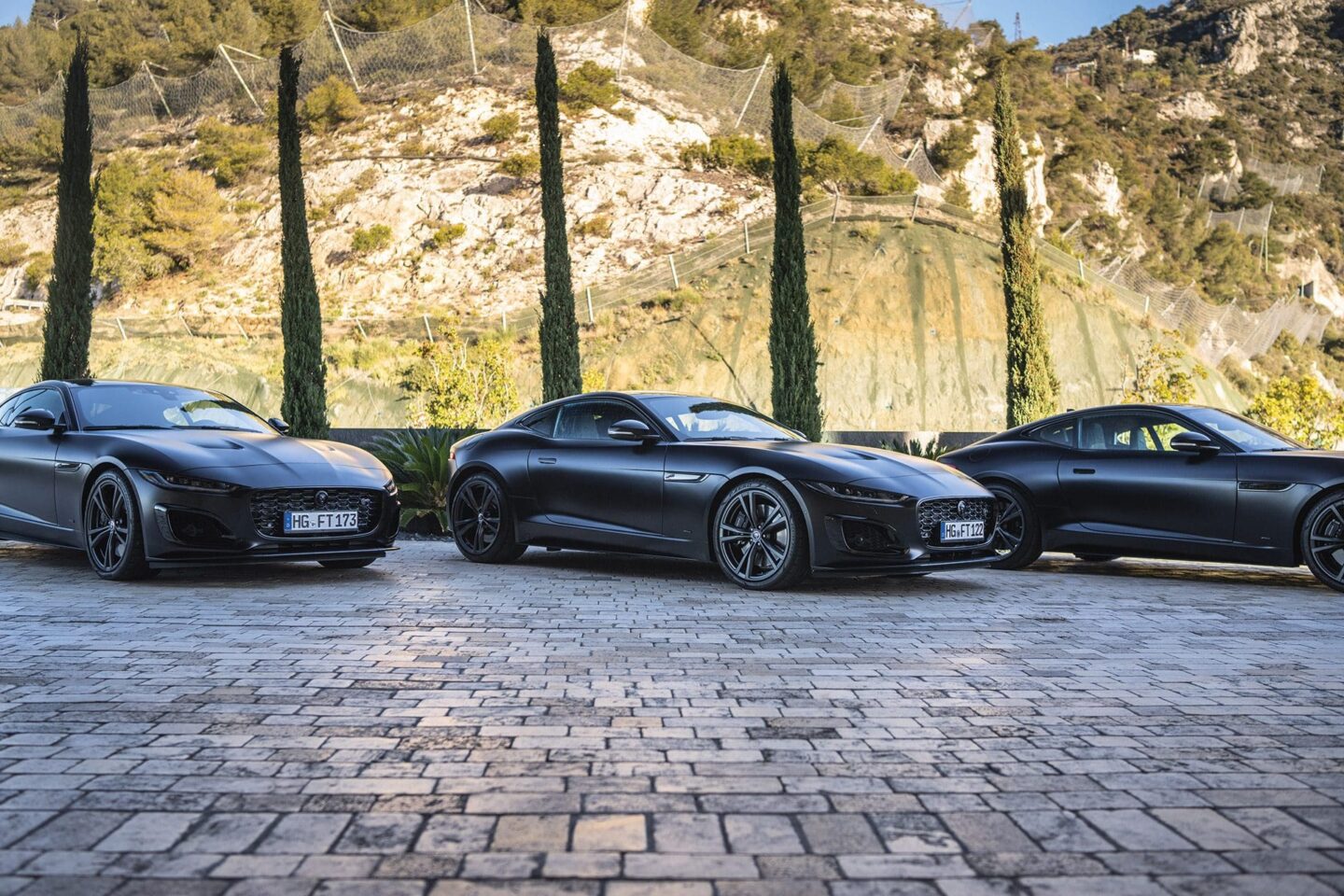
Following in the footsteps of the XK120 were legendary cars like the C-Type, the Le Mans-dominating D-Type, and the iconic, wedge-shaped also-Le-Mans-winning XJR. While all this might seem like a lengthy history lesson, it provides the background to one of the most important cars Jaguar ever made, a natural-born racer that would define the direction of the great British brand in the modern era – the much-loved F-Type, which arrived in 2013.
Now, a decade after the car was launched, and only two years since it underwent a significant restyling, Jaguar is calling time on the F-Type and, from 2025, on its combustion-engine lineup altogether. This year’s Jaguar F-Type 75 is, then, something of a bittersweet moment. Although it’s difficult to feel too downbeat when you’re looking at a brace of V8-powered F-Types flanking a fine example of their great grandfather – the legendary race-winning ‘NUB 120’ XK – outside The Maybourne Riviera hotel in the hills above Monaco.
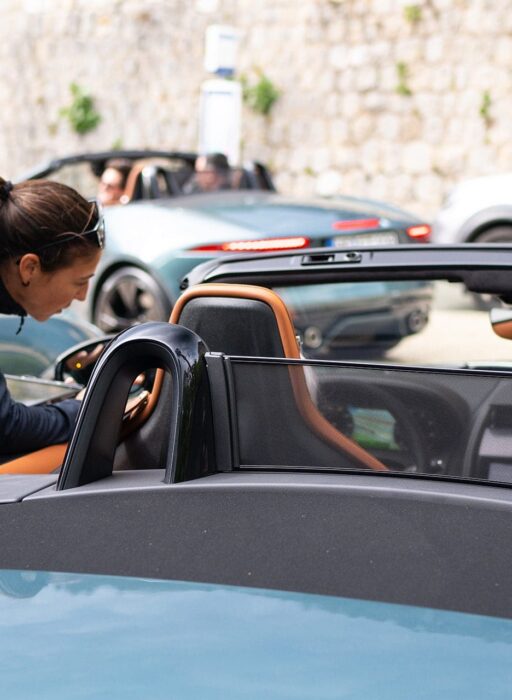
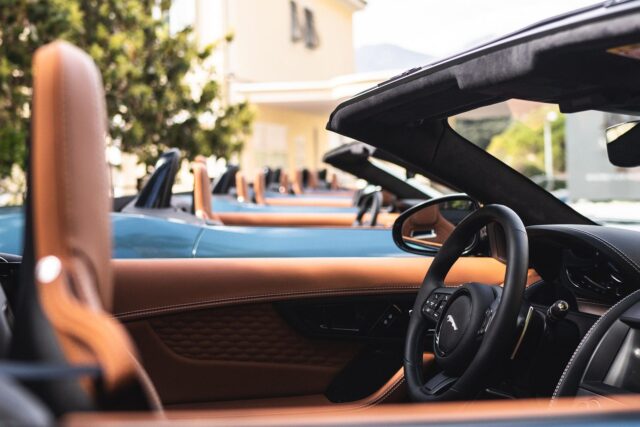
The F-Types in question have been commissioned as a final act to the highly-rated two-seater. On my left, the F-Type 75; on my right, the F-Type R75. The difference? The range-topping R model possesses 125 more horsepower and is available in all-wheel drive. The two models represent your last chance of purchasing a new F-Type with a V8 under the bonnet.
Starting with the marginally less-powerful of the cars, the 75 boasts a supercharged 5.0-litre P450 engine and is finished in a fetching new paint shade called ‘Giola Green’. Like all previous F-Types, the styling still looks fresh, despite the original car being penned as a concept by former Jag designer, Ian Callum, 12 years ago. It is available in rear- and four-wheel drive, and as a convertible or coupé. To experience the guttural roar of that British-made V8 one last time, you can’t beat the rear-drive droptop option. It’s hard to believe that such a visceral sound will soon become a thing of the past.
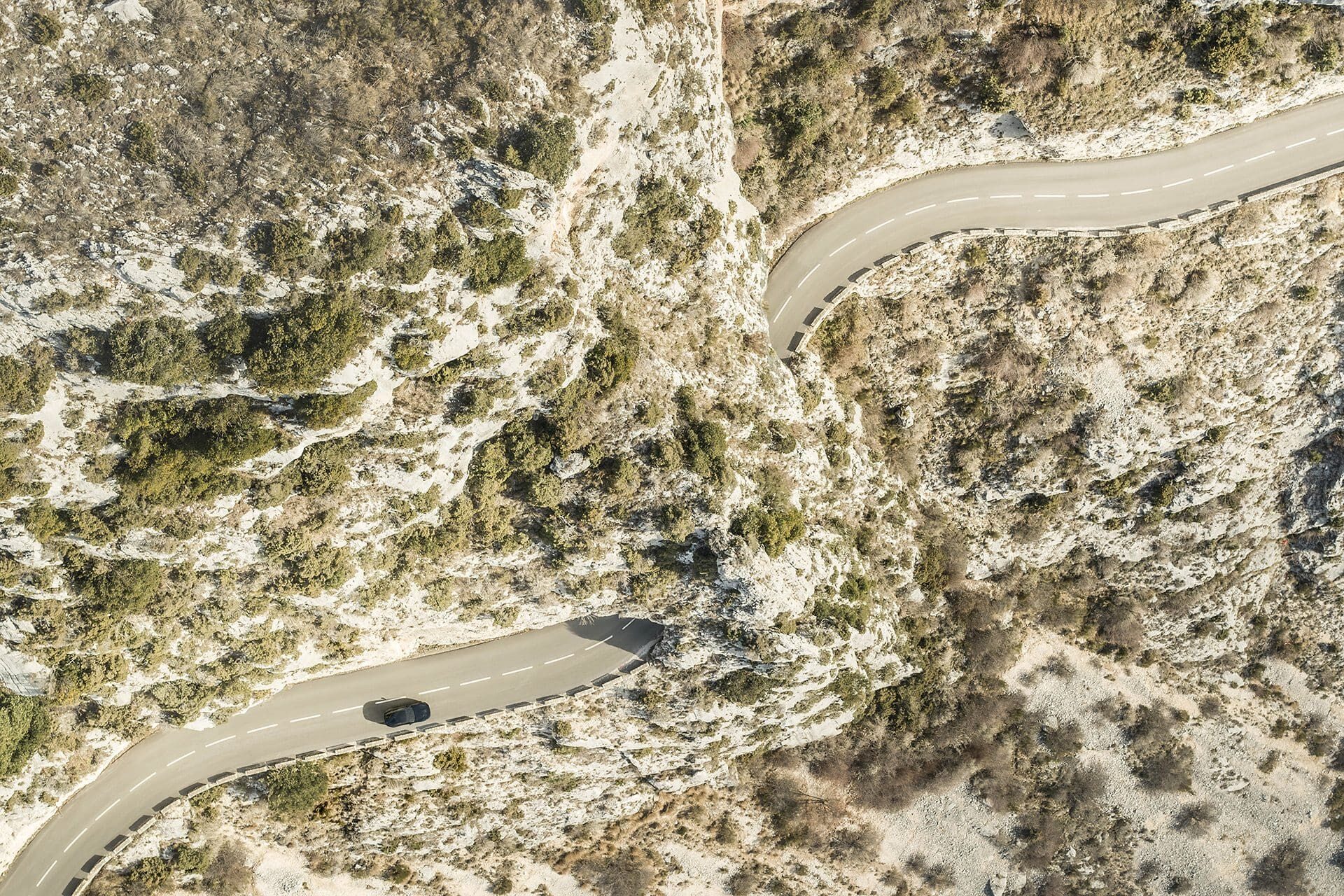
Both the 75 and R75 come equipped with 20-inch rims and Windsor leather as standard. Slight chassis tweaks make the handling in these F-Types even more precise than previous models, most notably in the range-topping R model. With 450 PS in the 75 and 575 PS in the full-fat R75, both have plenty of performance. The latter will cover the 0-60 mph dash in just 3.5 seconds and go on to an electronically-limited top speed of 186 mph – impressive stats that were slightly wasted on the twisting roads above Monaco and Nice, though the views somewhat made up for it.
Stepping into the more powerful R75, the snap, crackle and pop from the exhaust ricochets off the valley. On the road, both models are still hugely satisfying to drive. The handling differences from the 2019 update, which consisted of a facelift and new front lights, are minimal on both 75s, but as far as thrilling two-seater sports cars go, the F-Type remains hard to beat.
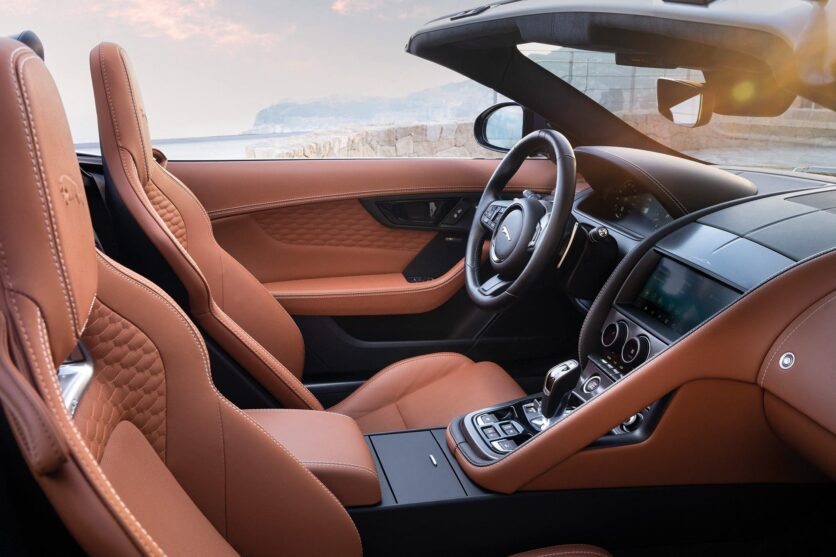
The final run F-Types start at £78,535 for the 75 coupé, and extend all the way to £108,270 for the R75 convertible. The satin black paint finish on our test car added a whopping £9,990 to the extras bill alone. You’ll pay a premium, then, but what price do you ascribe to a piece of veritable British motoring history? The final F-Types fly the flag for 75 years of motor racing at Jaguar and almost 90 years of the marque as we know it. Not long from now, you won’t hear the gurgle of a naturally-aspirated combustion engine. Nor the angry snarl of a virile V8. You’ll read about the engines in magazines and be startled by the noise they used to make on the road at classic car shows.
If that’s not an incentive to acquire one of the most beautiful V8-powered sports cars ever made, I’m not sure what is.
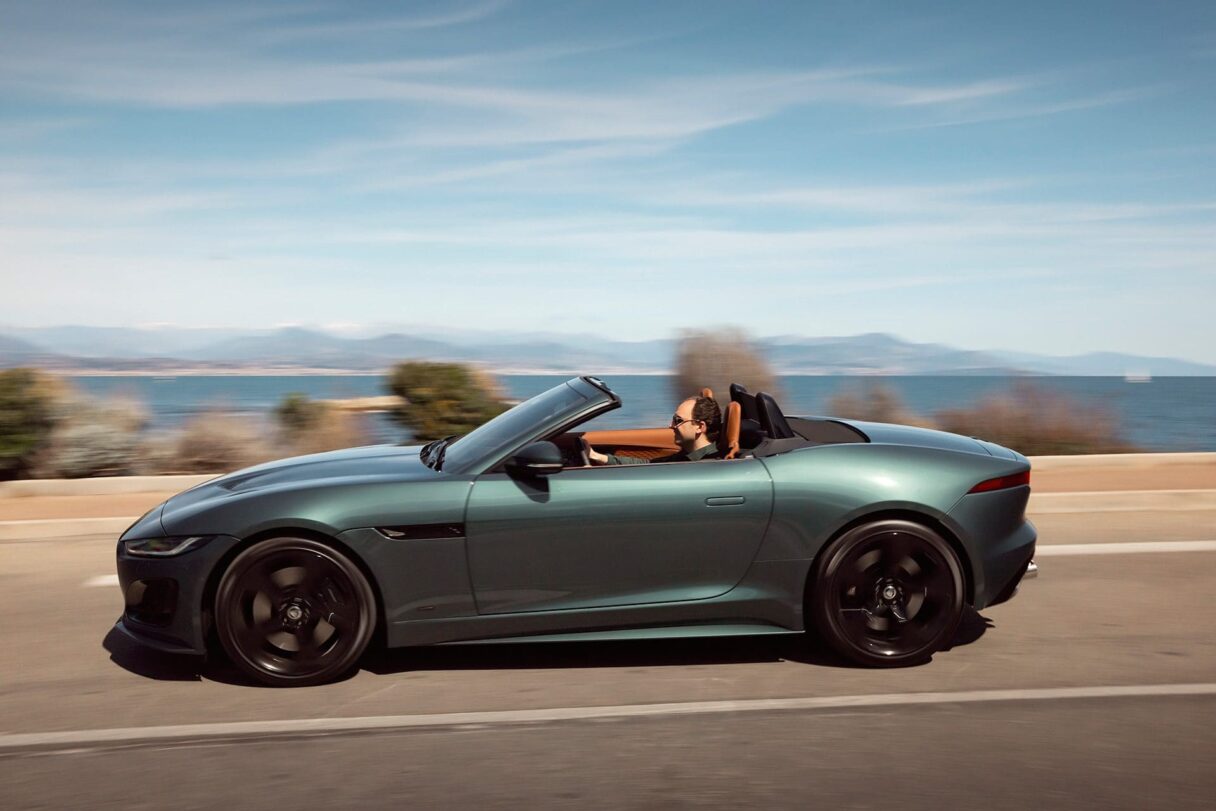
F-TYPE 75 COUPÉ
Maximum power: 450 PS
Maximum Torque: 400/4,500 nm/rpm
Top speed: 177mph
0-60mph: 4.4 seconds
Price: from £78,535
F-TYPE R 75 COUPÉ
Maximum power: 575 PS
Maximum Torque: 700/5,000 nm/rpm
Top speed: 186mph
0-60mph: 3.5 seconds
Price: from £103,075

